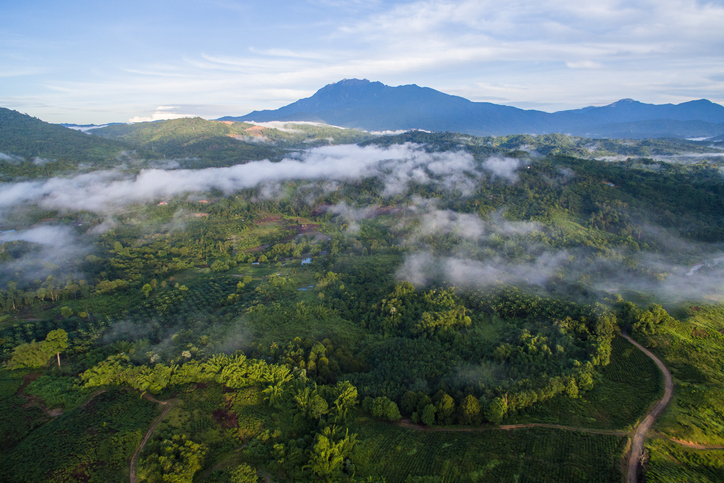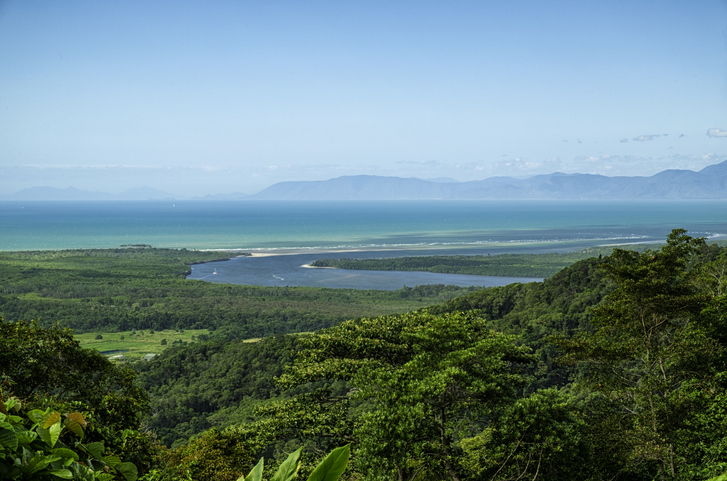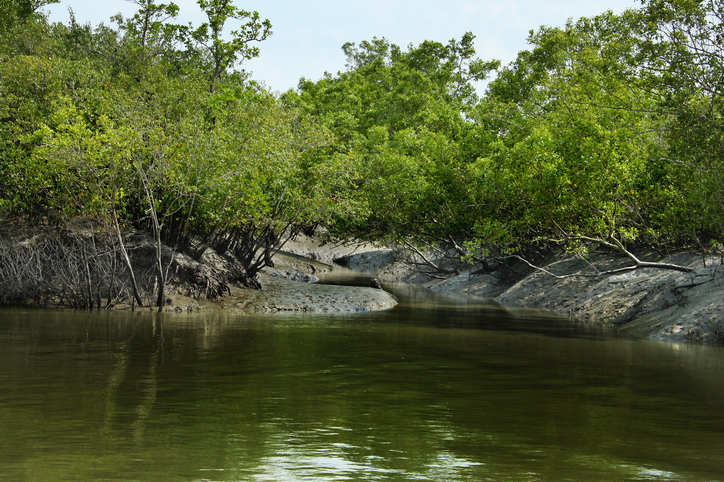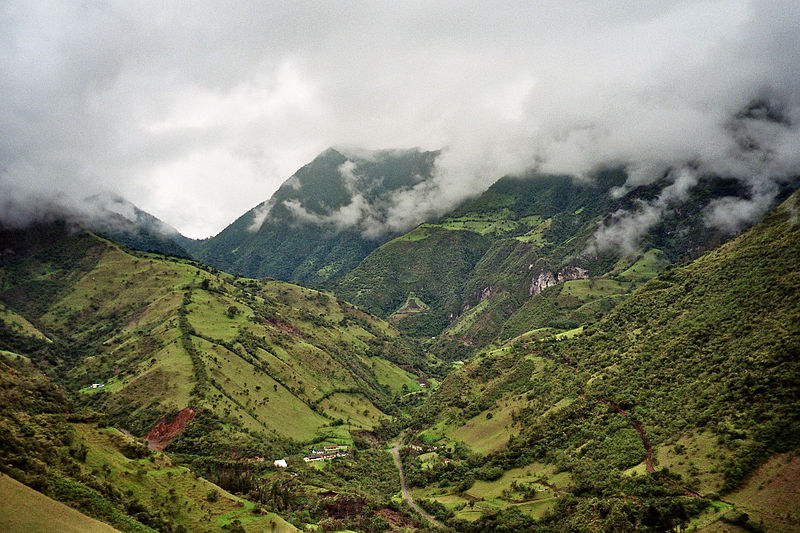Forests are known as the ‘lungs’ of the planet. Trees absorb carbon dioxide from the environment for photosynthesis and emit oxygen—making them planet-saving heroes. Not to mention an integral factor for human survival. Besides providing oxygen, forests all around the world are also important to help maintain the earth’s ecosystem. They mitigate climate change and encourage the growth of flora and fauna while serving as timeless reminders of how beautiful our planet can be.
According to the UN report ‘The State Of World’s Forests 2020’, forests cover 31 per cent of the global land area. The report also highlights that while the total forest area is 4.06 billion hectares, forests are not equally distributed around the globe. In recent years, with the spread of human civilization, several square miles of forest have fallen to deforestation. Forest degradation continues at an alarming rate, which further contributes significantly to the ongoing loss of biodiversity and climate change. Here’s a list of the largest forests in the world, standing strong as some of the last slices of true wilderness left in our modern world. Come and explore how each of them is impressively diverse.
15 Of The Largest Forests In The World
1. Amazon Rainforest, South America

The undisputed leader amongst the largest forests in the world, the Amazon rainforest spreads across much of Brazil, Bolivia, Colombia, Ecuador, French Guiana, Guyana, Peru, and Suriname. With its incredible 55,00,000 square kilometres (21,23,561 square miles), it is not only the biggest forest in terms of area, it is also home to one in ten species existing on the planet. The Amazon rainforest is the most biodiverse and largest rainforest in the world and has the largest range of wildlife and plants. Sadly it is smaller than it used to be and has already lost 20 percent of its original population of flora and fauna.
In recent years, these forests have suffered and are still suffering from ongoing deforestation, mismanagement and degradation. The world’s largest rainforest is an impressive one, millions of years old and is a treasure trove of plants and wildlife, home to many species such as the monkey brush vine, piranhas, and dart poison frog, amongst others.
2. Kinabalu National Park, Asia

Encompassing roughly 754 square kilometres (291 square miles), Kinabalu National Park is located on the northern part of the island of Borneo. Kinabalu National Park was Malaysia’s first national park and surrounds its namesake mountain (Mount Kinabalu), which is the world’s youngest non-volcanic mountain. Also a UNESCO World Heritage Site, the park’s habitats vary from lowlands in the tropics and hill rainforest to subalpine forest. The Kinabalu National Park boasts an extremely diverse and distinctive collection of plants, trees and animals. Home to over 1,000 species of orchids, the Kinabalu National Park is considered one of the most important biological sites in the world.
3. Daintree Forest, Australia

The Daintree Rainforest covers about 1,200 square kilometres (463 square miles), making it one of the largest forests in the world. Located in North Queensland Australia, it is the biggest continuous forest in Australia. Continuous Forests are sustainable ways to manage a forest region; such forests are created through the selection and harvesting of individual trees. The irregular structure of these forests makes them hardy and ensures they are maintained sustainably.
The Daintree Forest is a UNESCO World Heritage Site and is believed to have survived for over 100 million years. Also Australia’s oldest forest, these forests blanket the northeast corner of Australia and shade the coastline of the Daintree River. As far as wildlife goes, around 90 per cent of the world’s butterfly and bat species can be found here, along with a large percentage of Australia’s unique indigenous reptiles and birds. The forest is named after the famous geologist and photographer Richard Daintree, and it also borders another UNESCO site, the Great Barrier Reef Marine Park.
4. Valdivian Temperate Rainforest, South America

With an area of 248,100 square kilometres (95,792 square miles), the Valdivian Temperate Rainforest is a temperate rainforest in the southern part of South America. This forest is situated between the Andes Mountains and the Pacific coast, extending over two countries—Chile and Argentina. Also known as one of the youngest and largest forests in the world, the Valdivian Temperate Rain Forest takes its name from the city Valdivia. The forest is considered a bio-geographic island and features unbroken swathes of conifer and deciduous trees with dense underbrush of lush ferns and thickets of bamboo. Only formed 17,000 years ago, the landscape of this forest is very diverse—full of national parks, beaches, rivers, lakes, islands, and hiking trails—all of which provide much-needed cover for a multitude of wildlife including delicate animals such as the smallest deer species Pudu, the smallest wild cat Kodkod, and many ecosystems.
5. Congo Rainforest, Africa

Covering a gigantic 2,023,428 square kilometres (7,81,250 square miles), the Congo rainforest is part of the Congo Basin in Africa. The Basin itself covers 500 million acres, and it is larger than the state of Alaska. The Congo rainforest spans six countries—Cameroon, the Central African Republic, the Republic of Congo, the Democratic Republic of Congo (DRC), Equatorial Guinea and Gabon. Known as the world’s second-biggest tropical rainforest (after the Amazon), the Congo Rainforest is home to a diverse array of wildlife species, including elephants, chimpanzees, gorillas, rhinos, and more species that are beloved around the world, but increasingly endangered. Widely considered to be the planet’s “second lung” (after the Amazon), this tropical forest is considered to be one of the most important ecological balancers.
The diversity within this colossal, connected collection of forests is highly abundant: Out of 10,000 plant species found in this rainforest, around 29 per cent is uniquely indigenous, such as Caesalpiniaceae and okoumé trees. It is home to many wildlife species including approximately 1,000 species of birds and more than 500 species of fish have been spotted here along with approximately 500 varieties of mammals.
6. Rainforest Of Xishuangbanna, Asia

Situated in the Yunnan province in Southern China, Xishuangbanna Tropical Rainforest roughly covers about 2,402 square kilometres (927 square miles). This high-altitude tropical rainforest has a rare forest ecosystem that includes plenty of virgin forest and wildlife. It was recognised as a UNESCO International Man and Biosphere Reserve in 1993. Its vast expanse is so diverse that it is divided into many subtypes and contains no less than eight distinct types of biological areas. More than 3,500 types of flora have been scientifically documented in the forest region here, and it has more than 50 rare plant species along with wildlife including many endangered animal species such as Asian elephants, Indo-Chinese tigers, and gibbons.
7. Sundarbans, Asia

Geographically split (roughly 60 and 40 per cent) between Bangladesh and India, the Sundarbans cover about 10,000 square kilometres (3861 square miles). The forest was named after the Sundari tree, the most populous in the region. It is the largest contiguous mangrove forest on the planet as well as a UNESCO World Heritage Site. It is specifically classified as a “halophytic” rainforest, which means it is highly tolerant of excessive salt content and high water levels.
While the forest is known to be home to the endangered and famous Bengal tiger, the reserve also has many other wildlife like wild boars, river dolphins, cobras, Indian pythons, and crocodiles. In India, the Sunbardans are designated as a National Park, Biosphere Reserve and Tiger Preserve, while in Bangladesh, vast swaths of mangroves have Protected Forest status. However, the forest itself is only about 40 percent of the total area of the Sundarbans, while 50 percent of it is water, and the rest is sand dunes and mudflats.
8. Tongass National Forest, North America

Located in southeastern Alaska, Tongass is a temperate rainforest that covers 68,062 square kilometres (926,279 square miles). It is known as the largest forest in the United States of America, where about a third of its total area is complete wilderness. Its dense lot of evergreens mostly contain western Sitka spruce, western hemlock and red cedar. The glaciers of the Tongass National Forest are known to be one of the biggest tourist attractions. The forest also offers wildlife such as eagles, bears and rivers full of salmon. The near-pristine preserve houses some of the rarest flora and endangered fauna, all the more so because of its remote location.
9. Mindo-Nambillo Cloud Forest, South America

This sprawling forest is a cloud forest, which means it’s much cooler and more moist than a tropical rainforest. It is part of Ecuador, and an important ecological site, covering about 192 square kilometres (74 square miles). Situated in the neighbourhood of the great Amazonian Forest, the Cloud Forest offers a topographical variation in the forms of rivers, with highly elevated peaks. The grand topography of this forest is home to over 1,600 species of wildlife including birds, frogs and other animals. This beautiful ecological treasure is a private reserve that strives to protect this wide diversity in flora and fauna.
10. Sinharaja Forest Reserve, Asia
Located in southwest Sri Lanka, the Sinharaja Forest is the country’s last large viable area of tropical lowland rainforest which used to cover the island. This rich rainforest spans 34.22 square miles and is also home to 23% of Sri Lanka’s endemic animals and 64% of Sri Lanka’s endemic trees. Out of the endemic wildlife, the forest has over 85% of the country’s endemic birds and over 50% of its endemic mammals, reptiles and butterflies. The Sinharaja Forest Reserve is bounded by rivers on three sides namely, the Napola Dola and Koskulana Ganga in the north, Maha Dola in the south and Gin Ganga in the south-west and the rivers Kalukandawa Ela and Kudawa Ganga in the west. The Forest Reserve was named a UNESCO World Heritage Site in 1988 in recognition of its living heritage and valuable, rich ecosystems.
11. Taiga, Asia-Europe-North America
Taiga is also called boreal forest or a biome which is a biological and ecological system in the form of a forest. Lying between the tundra to the north and temperate forests to the south, it has been called the world’s largest land biome. This forest range is composed primarily of cone-bearing needle-leaved or scale-leaved evergreen trees, covering most of Northern Russia and North America below the Tundra belt and totally covering up to 17% of land on the planet (6.6 million square miles). In Russia, the landmass occupied by the Taiga as the Russian Boreal Forest stretches about 5,800 kilometres (3,600 miles), from the Pacific Ocean to the Ural Mountains. The impressive wildlife of Taiga forest areas includes bears, elk, moose, wolverines, minks, and pine martins.
12. Miombo Woodlands, Africa
This vast region of tropical grasslands, savannas and shrublands in Central Africa is home to some 8,500 plant species; over 300 of which are trees. Named for the oak-like “miombo” trees that dominate the area, the Miombo woodlands cover over 900,000 square miles and are spread across Angola, the Democratic Republic of the Congo, Malawi, Mozambique, Tanzania, Zambia, and Zimbabwe. This forest region provides food and cover for a diverse range of wildlife, including giraffes, rhinos, elephants, and grazing antelope.
13. Tropical Rainforest Heritage Of Sumatra, Asia
Sumatra’s rainforests are one of the last and largest remnants of tropical rainforests in Asia. This rainforest region comprises of three national parks: Gunung Leuser, Kerinci Seblat, and Bukit Barisan Selatan. Together, they cover 10,019 square miles (6,412,690 acres) and are home to many rare and endangered wildlife species such as tigers, elephants, orangutans, clouded leopards and sun bears. This forest site was inscribed as a UNESCO World Heritage site in 2004 and also houses numerous nomadic rainforest people who hunt and gather.
14. Forests Of New Guinea, Oceania
Spanning across 1,11,197 square miles, the forest areas of New Guinea are the third-biggest tropical rainforest in the world (after the Amazon and Congo basins). These beautiful forests encompass mountainous and lowland areas of particularly high biodiversity. These beautiful forested areas cover about 65% of the land area of New Guinea island (1,11,197 square miles). The rainforest is home to many unique animals and wildlife, including the world’s tiniest parrot, Scott’s tree kangaroo, the cyclops long-beaked echidna and the largest pigeon.
15. Virgin Komi Forests, Europe
Covering 10,215 square miles of tundra and mountain tundra, the Virgin Komi Forests is the biggest virgin forest in Europe. The forests are technically a part of the Taiga, the much larger forest system that appeared earlier on this list. But because Virgin Komi was designated as a natural UNESCO World Heritage site in 1995, the forest has warranted a place all its own on this list. They are located in Russia’s Ural Mountains and are composed of two Russian wilderness areas, the Pechora-Ilych Nature Reserve and Yugyd Va National Park. This beautiful forest is fillest with a combination of Siberian spruce, fir, and larch under which you’ll find wildlife like reindeer, sables, and mink.
Drown In Greenery Around The World With These Beautiful Forests
While there are numerous forests worldwide, the ones mentioned above are among the biggest in the world. Uniquely different, each of them has its own biological zone and is home to rare plants and animals found only within their confines. As you explore the forest ecosystem you’ll see how it is important to not only be aware of their importance but to also help with their conservation. In recent years, our forest cover has fallen dramatically. Several species of birds, animals and tree species are near extinction, endangered or critically endangered. Controlled deforestation and protection from forest fires are essential for the balance of our ecosystem.
While a large part of this responsibility lies with local governments and institutions, as travellers we too can do our part in spreading awareness and being accountable. We can also minimise damage by employing eco-friendly practices while visiting. Therefore, it is important to do some basic research about best environmental practices before visiting these forests. It also helps to explore them with local guides and communities whose interests lie in the preservation of these forests and the species and wildlife they are home to. Exploring these beautiful forests with experienced and knowledgeable local guides will also allow us to understand the ecological importance of the various species of flora and fauna we may encounter, creating a richer experience and deeper appreciation. So, plan a trip to visit these beautiful forests in the world where their sheer size and natural gorgeousness will knock the socks off you.
Also Read: Which are the most popular forests in the UK?
FAQs About The Largest Forests In The World
The largest forest in the world is the Amazon rainforest.
The biggest forest is again the Amazon rainforest.
Congo Basin Forest is the second-largest tropical forest worldwide.
5 biggest rainforests in the world are The Amazon, The Congo Rainforest, the New Guinea Rainforest, the Valdivian Temperate Rainforest (home to the smallest deer), and the rainforests of Borneo (shared by Indonesia, Brunei and Malaysia – Kinabalu National Park is part of the Borneo rainforest region).
Amazon is the biggest jungle and it covers Brazil, Bolivia, Peru, Ecuador, Colombia, Venezuela, Guyana, Suriname and French Guiana.


